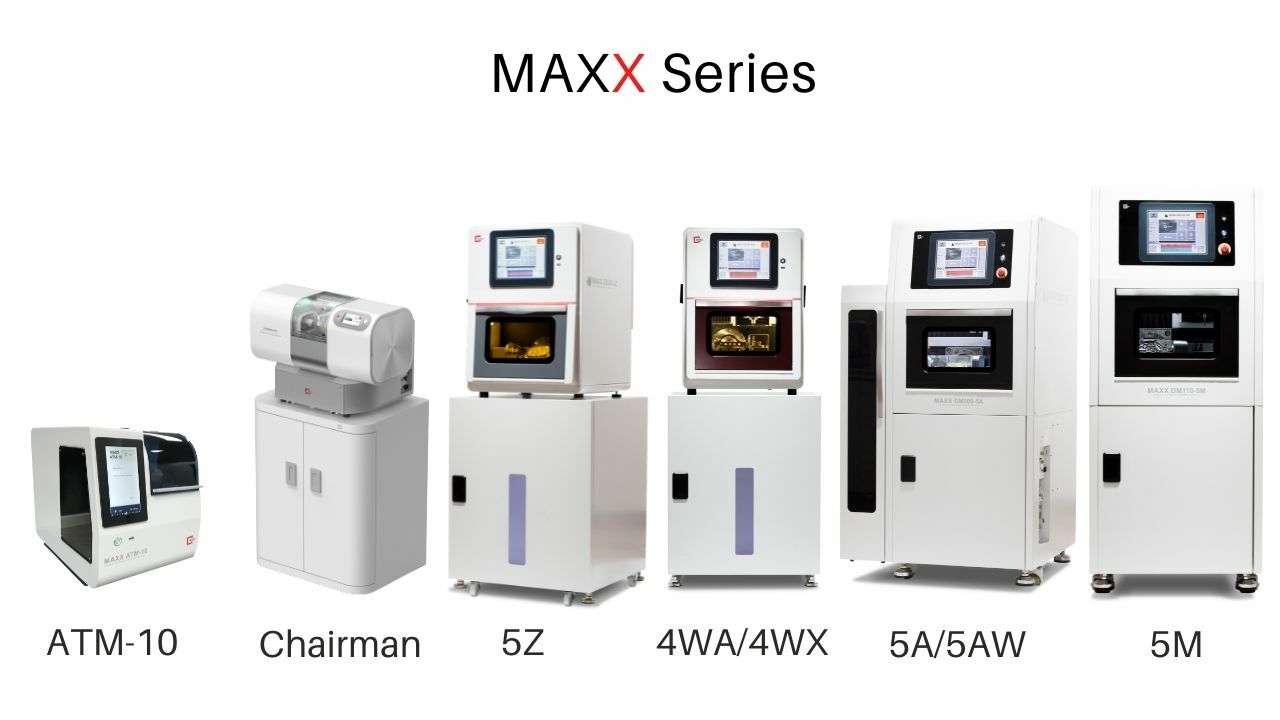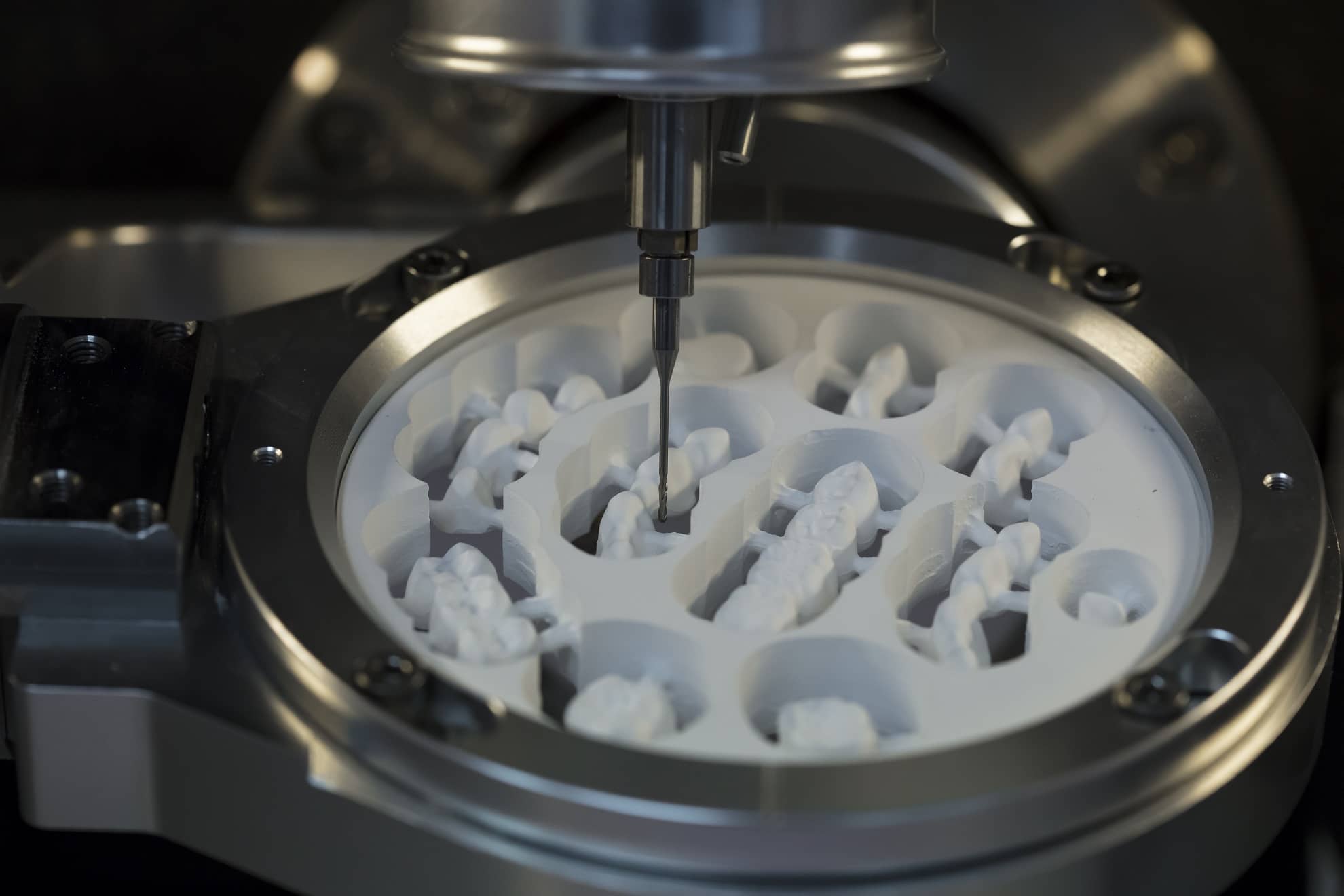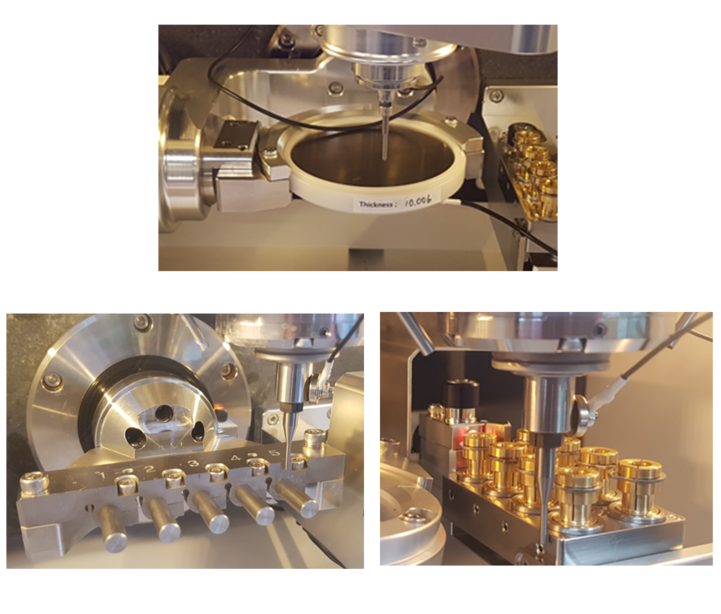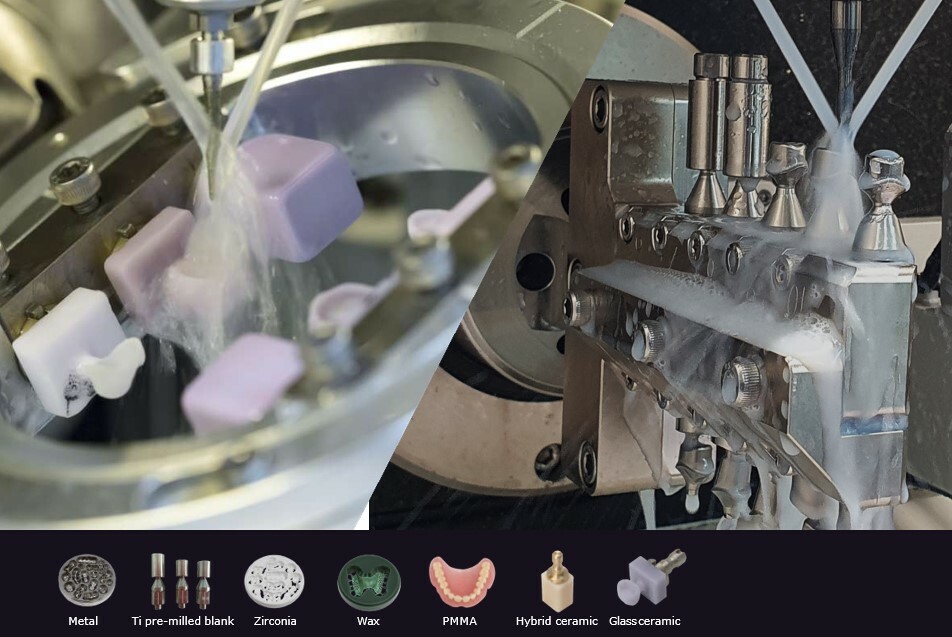Robots and Design (MAXX Series) offers optimal milling machines for every dental laboratory and clinics. Whether it is dry, wet milling, or a combined all-in-one machine, 4-axis, 5-axis, we have a specific product model for each use case.

Wet or Dry milling?
In general, whether a mill should be dry or wet is determined by the type of material being milled. Wet milling is needed for some ceramic materials, such as lithium disilicate and feldspathic porcelains, as well as some metals, such as chrome cobalt. Zirconia and titanium, for example, can be milled either dry or wet. Wax and acrylic (for temporaries) are milled dry in general.
It's not about needing one or the other in a modern laboratory that wants to optimize profit and use expensive machines to their maximum potential; the optimal choice is to provide the most versatile restorative service by operating both dry and wet milling machines and delivering a total restoration that is quicker, more effective, and non-restrictive in terms of materials. As a service provider, you never want to be in a position where you have to turn down dental restorations or outsource it to another lab because you don't have the right milling machine or the materials to complete it quickly enough.

Why should we separate devices into only wet/dry or combined milling?
- Feasibility – Robots and Design provide only dry, only wet, and combined types of milling machines for a variety of purposes, one of which is feasibility. According to our market research, we discovered that dental technicians never use combined modes of dry and wet milling, preferring to use them exclusively as dry milling or wet milling only.
- Production capability – For a combined milling machine it's not going to be the same as 2 separate wet and dry milling machines, whereas the price is similar. Robots and Design have DS200-5Z for dry milling and DS200-4WA/4WX for wet milling, therefore these 2 machines will have almost the same cost as a typically combined machine but increased production capability and speed. For combined milling, we have options like DM200-5M, 5A, and 5AW. Each of them has unique zig fixtures, operation and designed for big dental labs.

4-axis or 5-axis milling machine?
In a 4-axis machine a workpiece is processed in the same way as it would be with a 3-axis unit, but with the addition of a rotary movement around the X-axis, known as the A axis. A 5-axis unit, on the other hand, has an extra B axis direction for better undercut milling and less prep-work.
4-axis is more than enough for day-to-day milling, custom abutments, and long-span bridges as well. However, for multi-insertion high-angle units, 5-axis will be used. A 5-axis can also nest an angled unit anywhere in the disk, while a 4-axis can only rotate 180 degrees and has minimal placement in the disk.
Robots and Design have a specialized DS200-4WA/4WX model for custom abutment and glass-ceramic (lithium disilicate) milling. DS200-5Z is a 5-axis machine specialized in soft material milling like zirconia, wax, PMMA, hybrid ceramic. DM200 Series for “all-in” milling solution that can mill any materials in 5-axis with less prep-work and powerful for even metal implant bar milling.
Conclusion
Milling machines are available in a wide range of shapes, sizes, and configurations. These devices are certainly more than meets the eye. Prospective buyers should inquire about the quantities and materials they want to mill. They should assess the output of mills before purchasing them, as well as the number of tools in the mill, their expense, and the expected lifespan.
They can factor in the additional cost of tooling for each machine they mill. Most importantly, they should keep in mind that, depending on milling techniques and tooling, machines that appear to be nearly identical will work very differently.
Buyers should not be afraid to ask questions and obtain responses. Purchasing a mill is an expensive capital expenditure that a laboratory owner would most likely have to deal with for several years.
Robots and Design – Dental CAD/CAM solution provider based in South Korea.
Contact: www.maxxzone.net
